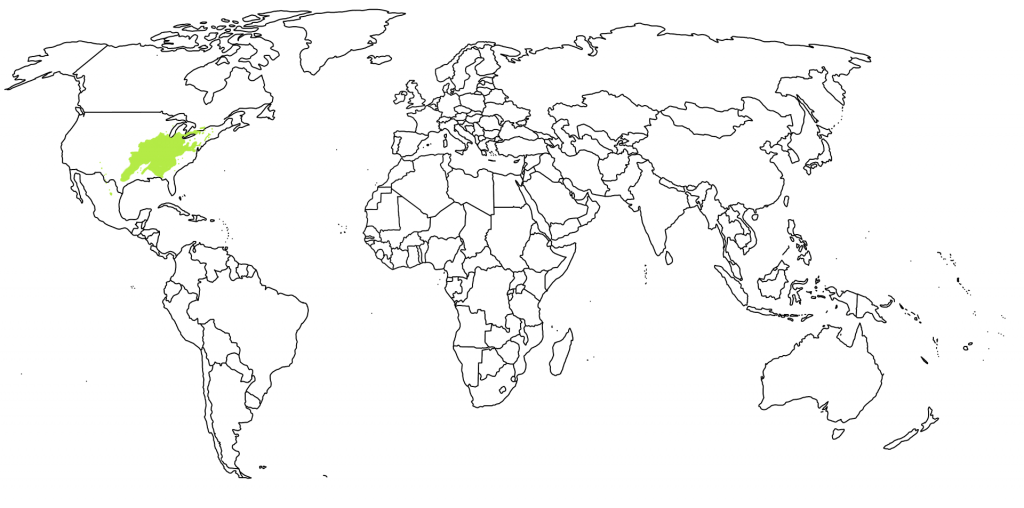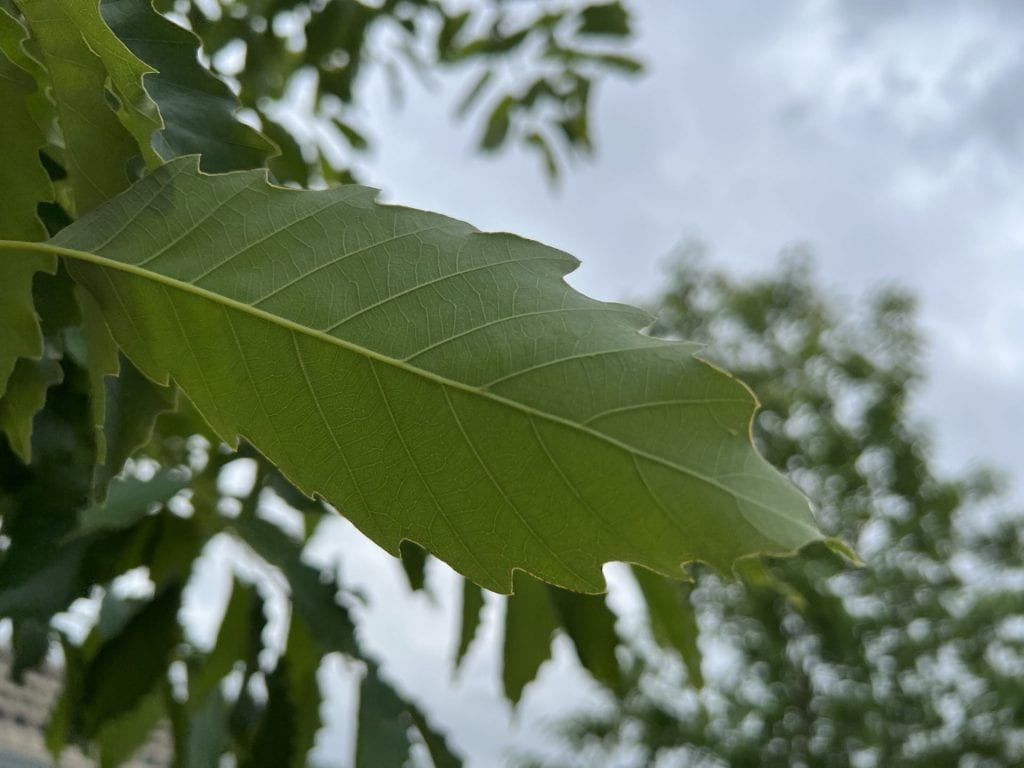Chinkapin Oak
Arbor Walk #26, Treekeeper ID #1345

Native to the Midwest, the Chinkapin Oak can be easily recognized due to its small, toothed leaves. Unlike most oaks, the Chinkapin has unusually flaky and fissured bark. Although this tree grows best in deep, well drained soil, it may also grow on dry limestone bluffs and hillsides. Also referred to as the Yellow Oak, early settlers used this tree for fencing and fuel for steamships.
This tree lined walkway is part of the historic Landscape of Washington University. The Chinkapin Oak was part of a strategic allée restoration planting in 2016, which replaced the dying Pin Oak (Quercus palutris) allée.
The Chinkapin Oak is a member of the subgenus of white oaks. These oaks are distinguishable from other oaks from their smooth lobe tips (no awns), their hairless leaf undersides, and their lighter, flakier bark. The acorns of white oaks are also less tannic, meaning that they require less processing to become safe and palatable.

GPS Coordinates
N/A
Percent Concrete
N/A
Distance to Buildings
| Year | Close Building #1 | Close Building #2 | Close Building #3 |
|---|---|---|---|
| 2020 | Olin Library, 29.23 m | Rebstock Hall, 33.30 m | Eads Hall, 53.63 m |
Distance to Other Species
| Year | Close Species #1 | Close Species # 2 | Close Species # 3 |
|---|---|---|---|
| 2020 | Chinkapin Oak, 7.82 m | Chinkapin Oak, 9.10 m | Chinkapin Oak, 9.35 m |
Standard Measurements
| Year | Height (m) | DBH (cm) | Caliper (m) | Crown Diameter N-S (m) | Crown Diameter E-W (m) | Average Crown Diameter (m) |
|---|---|---|---|---|---|---|
| 2020 | 6.8886 | 13.2 | N/A | 4.23 | 4.70 | 4.47 |
| 2023 | 10.34 | 20.6 | N/A | 5.66 | 6.89 | 6.275 |
| 2024 | 11.1 | 23.6 | N/A | 6.8 | 8.38 | 7.59 |
Nests and Pests
| Year | Description |
|---|---|
| 2020 | 2 tiny cankers Grey and green lichen |
Leaf Identification
The leaves of the Chinkapin Oak are narrowly oblong with dentated to undulated lobes. They are typically 4″ to 7″ long, and the venation is pinnate. They are usually dark green but turn yellow in the fall.
Twig and Bud Identification
The twig of the Chinkapin Oak is orangish-brown. They have multiple terminal buds, and each bud has many scales.
Bark Identification
The Chinkapin Oak has rough, grayish-tan bark that is unusually flaky. it is also fissured and broken into squares.
Fruit Identification
The fruit is 1/2″ to 1″ long acorn. It is typically broadest around the middle, and the cup covers about a third of the acorn. It forms a tattered fringe on the margin of the cup.
Flower Identification
The male flowers of the Chinkapin Oak are 3″ and 4″ long, yellow-green catkins. The females are green to reddish and very small spikes. They tend to cluster in the leaf axils.
[photo forthcoming]








